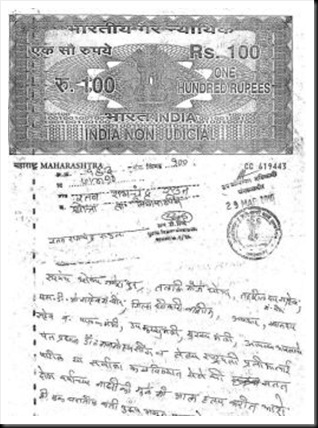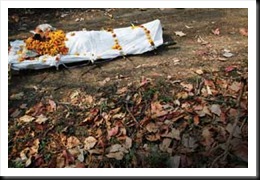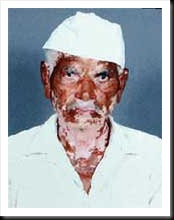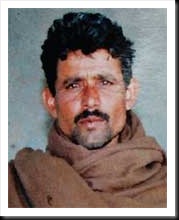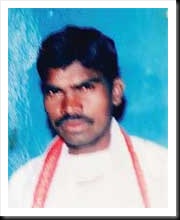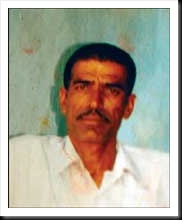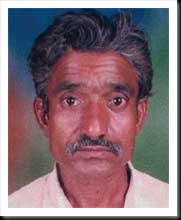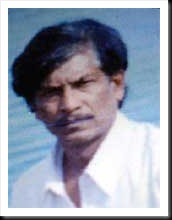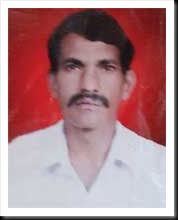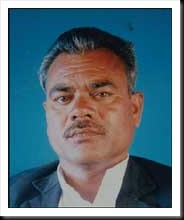The Departed
The sowing season in Vidarbha has just begun, but already there is a sense that more farmers could end their lives this year than in the past. What makes them do it? VIJAY SIMHA and photographer PRASHANT PANJIAR investigate, death by death, and find a whole new meaning to the story
FARMING WORKS best with innocence. When a farmer retains his talent for a life without clutter, when the skies open up exactly when needed, and when the state keeps its heart sensitive. Thus secure, it was believed that a farmer could die of only three things: old age, lightning, or rolling over in a tractor. In Vidarbha today, it would seem that anything can kill a farmer.
Vidarbha is in eastern Maharashtra, an area almost as big as South Korea and 65 times the size of Delhi. The terrain can be brutal and benign. Here, until 1997-98, the farmer was relatively comfortable. The crop, principally soybean and cotton, brought the cash home. Things were so good that cotton from Vidarbha used to have a monopoly, and soybean from the area propped up an entire industry in India.
The cotton market crashed globally 10 years ago. In addition, the Indian market was flooded by imports. Cotton became a liability. Soybean was hit by unfortunate events. The railways did not give rakes to lift soy from Vidarbha. They gave priority to fertiliser and cement. The soy wasted away in the mandis. Then, drought hit. So, soy stopped generating money as well. Farmers’ suicides increased.
Farmers in India normally have two seasons, rabi and kharif. Vidarbha has a third, the suicide season, in April, May and June. It is the sowing season and the farmers need to buy seed. Those unable to do so tend to give it up, most suicides happen in June. TEHELKA investigated 10 suicides that occurred over 48 hours or so beginning March 22. Two cases had more to do with alcoholism than farming and were taken off the list. Over the next few pages, you will read about the other eight farmers who killed themselves, and their circumstances.
It is normally understood that the Vidarbha farmer chooses to die because he can’t meet the costs of running his farm profitably. But, the deaths of these eight farmers tell a different tale. It appears that suicides in Vidarbha are not merely from problems in the fields. A host of reasons, primarily social, are driving the farmers into a lifestyle and a thought process they can’t sustain. The desire to move up socially is driving up the costs of living as the farmer spends to gain status. When the farm can’t pay for this, the farmer has a choice: lose face or lose life. He prefers to lose life.
The first recorded suicide of a Vidarbha farmer was sometime in 1997, when Ramdas Ambawar gave up his life because he couldn’t pay back a loan. The Shiv Sena was heading the government and Narayan Rane, the chief minister, gave Ambawar’s widow Saraswati a cheque for Rs 1 lakh. It was the first widow compensation and triggered a belief that money would come after they ended their lives.
Since then, around 7,300 farmers, 7,000 men and 300 women, have committed suicide in Vidarbha because they couldn’t find solutions to a vortex of problems. In 2006, the Maharashtra government listed 1,886 suicides by farmers in Vidarbha, the highest in a year. This year, till the end of March, about 204 farmers have already committed suicide. There is a sense that if the rains stay away, more farmers could end their lives this year than in the past. Also, it may not be enough to limit corrective measures to the farms. The attitude change among farmers is causing a bigger mess. Some of the reasons for the spate of suicides in Vidarbha, therefore, are these:
HIGH COST OF HEALTHCARE
Astonishingly, many farmers are falling sick in Vidarbha. Most of these farmers avoid the government’s primary health centres because the doctors are rarely there. Even if the doctors are available, the farmers don’t trust government healthcare. So they rush to private clinics and pay higher costs. “Like emperors, they go to the costliest clinics and hospitals in Nagpur and get themselves treated,” says Kishor Tiwari, who runs the Vidarbha Jan Andolan Samiti, an NGO that works for farmers. Tiwari is dismayed at how the issue is getting more complex. Most families where a suicide has taken place, for instance, have a member who requires medical attention.
EXAGGERATED WEDDINGS
This is probably the cruellest factor. The communities of Vidarbha seem to have created a system of social rituals that includes a generous wedding. A family that does a simple wedding loses respect and that creates serious everyday stress. Several suicides are largely because of the loans taken for dowry. The men would give up their lives rather than get their daughters married in a low-cost ceremony. In many houses, the elders of family keep repeating that the man of the house killed himself because of his daughter’s wedding costs. Daughters are mostly in the room when this is said.
NO ALTERNATIVE TO AGRICULTURE
Curiously, there is virtually no industry in the area. Though the area is in the centre of India, it is not a hub. So, if the crop fails, a farmer is done for. Jobs are rare. The private sector is absent and the state has no money to employ people. The National Rural Employment Guarantee Act (NREGA) offers lowend work, but the farmers think it would erode their standing.
POOR CROP
For two years, Vidarbha has had poor monsoon and now, miles of Vidarbha are barren. The life of a farmer ebbs when his farm fades. This is a critical factor because if the crop were to be good, a farmer would happily organise good healthcare for his family, have grand weddings for his daughters and buy pesticide and other farm requirements. If the crop is poor, a farmer needs money because he doesn’t scale down other things. Loans thus become killers.
ABSENT STATE
The state is the only entity that can handle all the other reasons for farmers’ suicides. For instance, the state can offer good and cheap healthcare and education, it can motivate businessmen to set up industry in the area, and it can provide for irrigation. But, TEHELKA did not find a single government representative in the villages of Vidarbha. There is no one to go to, and no one to trust. On paper, the state government has a compensation policy in cases of suicides, but that is tax payers’ money and comes with many clauses. So, barely a tenth of the suicide cases qualify for compensation. It’s the same with the waiver for crop loans.
Civil society has a few demands that they think may help. They are asking for a Rs 30,000 grant to a farmer for a daughter’s wedding, food grain at Rs 2 a kg, free healthcare, more work under NREGA, barring moneylenders from dealing with farmers, and improved irrigation. Maharashtra has no money for this.
All these reasons are coming together in the complex world of the Vidarbha farmer. Political parties are nowhere to be found in the villages. Counselling seems to be an urgent need, but there’s no one to do it. Left alone, the farmer is open to anything his mind tells him. At the moment, it is telling him to leave.
Two Weddings, a Funeral and a Feast
| 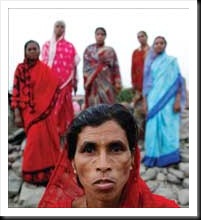
NAME OF THE DECEASED: ARUN TUPATKAR, 50
RESIDENT OF: PIMPRI KALGA, YAVATMAL
CAUSE OF DEATH: DRANK ALCOHOL LACED WITH INSECTICIDE
DATE OF DEATH: MARCH 23, 2010
|
EVERYBODY KNOWS them, the farm widows of Pimpri Kalga in Yavatmal. There are 14, which makes the village the suicide capital of Vidarbha. In the house of Arun Tupatkar, the latest farmer to have killed himself here, they gather with the air of a family remembering a man who did the right thing.
Tupatkar lived with his wife, three daughters and a son. He was 50, the wife 45, the daughters 23, 20 and 14. The son was 18. He had nine acres, where he grew soybean and arhar (yellow pigeon pea), a favoured lentil. The family watched colour television at home and used cell phones.
The soy and pigeon pea should have paid for a couple of sons-in-law, but the crop was low for two years. In Pimpri Kalga, a failed crop is no big deal. But a daughter’s wedding has to be only one way: early and in style. They start to talk about it from a daughter’s teenage, about the dowry and the wedding.
A driver and a shopkeeper were interested in marrying Tupatkar’s daughters. They would cost Rs 25,000 each, but at least they were not farmers. Tupatkar had an uncle, Manik Rao, who killed himself 10 years ago. The government’s compensation policy had just been cleared and Manik Rao’s family got the money. It worked for the uncle. It might work for Tupatkar too.
So, he borrowed Rs 50,000, partly from family and friends and partly from a moneylender. The dowry was secure. He also borrowed Rs 20,000 from a cooperative society as crop loan. He got his daughters married. Villagers still remember how hearty the spread was.
| A failed crop is no big deal. But a daughter’s wedding has to be only one way: early and in style. They start planning from a daughter’s teenage |
The harvest was more stubborn. Crops are not like sons-in-law, they don’t prop up at the sight of money. Tupatkar’s loan got him a little seed and pesticide, but it didn’t buy him rain. The crop failed for two years. Now, Tupatkar had a problem. He had to return money to friends, family, moneylender and a bank. He still had a daughter and a son in school. He began to drink. He would start during the day and end the night drunk.
On March 23, Tupatkar left early and began to drink. He returned at lunch time, breezed past the family and went into an inner room. He came into the drawing room soon after and told his wife and daughter: “I’ve taken poison.” They rushed him to hospital but he died en route.
Tupatkar’s widow Rajubai barely eats now and has periodic convulsions as she mourns. The village, meanwhile, is preparing for the 13th day feast. They have sent along bags of wheat, rice and sugar for the ceremony. It will be another grand farewell.
A Bank and a Man, Both Needed Money
A tractor waits outside the courtyard of Pritilal Thakre’s house. There are cots and benches in the courtyard. There’s a satellite dish. Inside, a mobile phone is being charged. There is a landline phone, covered by dust. A fan is whirring and about 20 people are in the room. Thakre’s widow, Pramila, is crying. His son, Pramod (24), is staring into the distance, and two daughters, Malti and Manju, are attending to their infant children. Pramod and other male relatives take the questions.
| 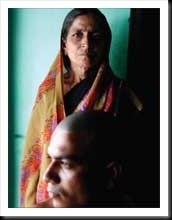
NAME OF THE DECEASED: PRITILAL THAKRE, 55
RESIDENT OF: DONGRALA, BHANDARA DISTRICT
CAUSE OF DEATH: CONSUMED INSECTICIDE
DATE OF DEATH: MARCH 24, 2010
|
What happened?
On Ramnavami (March 24), he (Pritilal) went to the farm as usual in the morning. He returned at 11 am, had lunch and lay down inside. After a while, he said he wasn’t feeling well. We thought his blood pressure had shot up. He went quiet and began to foam at the mouth. We took him in a tractor to the government hospital at 2.30 pm. At 4 pm, they declared him dead. They said too much time had passed before he was taken to hospital.
Why did Pritilal kill himself?
He had taken a loan of Rs 2.01 lakh in 1994 from the Bhoomivikas Bank here to buy a tractor. Some days ago, employees of the bank came and said they would take possession of the land against which he had taken the loan. Word spread through the village that the land was being seized.
It’s a 16-year-old loan. Was it not paid back all this while?
We had already paid Rs 4 lakh for a Rs 2 lakh loan. We used to pay between Rs 40,000 and Rs 80,000 a year as instalment. But they said it was going towards the interest of Rs 36,000 a year. The bank employees claimed we still owed them money. We stopped paying three years ago. We wanted a settlement. The bank was not interested in one.
What type of bank was this?
It was a cooperative society bank, which was later dissolved. The government then nominated a few people to try and revive the bank. The bank is bankrupt and the employees want people to pay instalments, which would go towards their salaries.
| We paid Rs 4 lakh for a Rs 2 lakh loan. The bank said we still owed them money. We wanted a settlement. The bank was not interested |
Evidently, the family has been doing well. So, why did Pritilal end his life?
Pritilal was a supplier of building material. He also used to work on the farm. He bought a tractor on loan because he thought he could supply building material faster and better with the tractor. But his business started to fail because of the recession.
Was suicide the only option?
No. We told Pritilal that we would help with the bank settlement. But he didn’t listen. He should not have killed himself.
The Poor Little Rich Adivasi
| 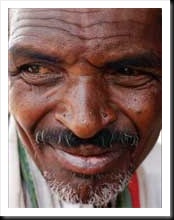
NAME OF THE DECEASED: LAXMAN TEKAM, 30 RESIDENT OF : MANGI, YAVATMAL
CAUSE OF DEATH: HANGED HIMSELF
DATE OF DEATH: MARCH 24, 2010
|
THE SON
Laxman Tekam, father of two boys Nilesh (5), Dinesh (3), and a girl Neelam (six months). Husband of Ratnamala, 25, who was away giving birth to Neelam when Laxman began to show signs of dysfunction. An active farmer who would begin work in the fields at 5 am, earlier than everyone else, he would also stop passers-by on the road and shout incoherently. Apparently believed he was too poor to pay back the loans his father, Champat Tekam, had taken.
THE FATHER
Champat Tekam, 50, who takes loans to handle farm costs. Now has to raise his grandchildren. Also has to care for his wife, Yamuna, and Laxman’s widow, Ratnamala. Changes his story according to the listener. Tells the police that his son was mentally ill and therefore hanged himself. Tells journalists that his son couldn’t handle the pressure of the loan. Lives in a two-room shack where his son hanged himself.
THE LOAN
Two loans from the Sahkari Bank, both taken by the father. Rs 15,000 in 2006 and another Rs 6,560 added to the same loan in 2008. The passbook shows an interest of Rs 440 on this loan. In 2008, the loan was fully paid and the passbook entry shows ‘nil’ as the pending amount. In April 2009, a fresh loan of Rs 30,800 was taken as crop loan, and an amount of Rs 9,200 added to it as another loan component. Total loan outstanding is Rs 40,000.
| The family had 20 acres next to the highway. But, the son believed he was too poor to pay back the two loans his father took for seed |
THE LAND
Twenty acres of prime land adjacent to the national highway. The police station is located on this land, which must be worth a lot. The land is in Champat’s name, and he gave 10 acres to his sister. Of the 10 acres left with him, he grows soybean, cotton, pigeon pea, and jowar (sorghum). The farm is big enough to provide handsomely for the Tekams, but it hasn’t given much over the past two years because of scanty rain in the area: just one quintal cotton, and 50 kg each of soy and jowar.
THE ACT
On March 24, almost everyone in the village was attending a marriage. Laxman’s family was there as well. Laxman returned home without telling the others at the marriage. He picked up a nylon cord, tied it around a wooden beam in the house and hanged himself. He must have been short because the distance between the beam and the floor is barely over six feet. When the family returned, they found Laxman’s body hanging. The entire village turned up for his funeral. He was buried in his farm, according to Adivasi tradition.
The Man in the Well
Dear Father,
| 
NAME OF THE DECEASED: PURANLAL RAHANGDALE, 52
RESIDENT OF: MAKHETOLA, BHANDARA DISTRICT
CAUSE OF DEATH: DROWNING
DATE OF DEATH: MARCH 22, 2010
|
I am at home talking to journalists who have come all the way from Delhi to know our story. It is some days since you departed and I have still not gone to the 1.25 acre farm. Nor have I taken our Tata Sumo out on work. I used to see you take a train to work every day as a sweeper in the Forest Department. I also used to see you drink every day and behave badly with my mother and, later, with my wife as well.
I was sad when we learned two months ago that you had tuberculosis. You used to cough the entire time, father. I was horrified when you abused the doctor who came to see you 15 days before you died.
The journalist wanted to know if we have a crop loan. I told him the truth, father. That we do not. I told him we gave the farm out to sharecroppers. I remember, father, that you did not go to work the day you died. You said you wanted to go to the hospital and you asked me for Rs 20. You took the money and my mother saw you returning in the distance, walking across the fields.
When you didn’t reach home even an hour later, we looked for you. We found you where you jumped, in the well. We had to fish your body out with a net. That is all I want to say, father.
Your son,
Durvesh
In the Still of the Night
Baba Rathod was found at dawn, hanging from a beam near the entrance to his house. There may have been a few arguments between him and his son over the crop loan Rathod took, though the son now chooses his words with care because he expects compensation. This is Rathod’s story in the words of his family.
| 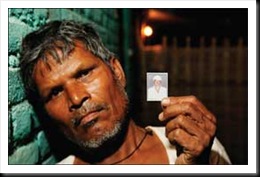
NAME OF THE DECEASED: BABA RATHOD, 60
RESIDENT OF: KHANDALA, YAVATMAL
CAUSE OF DEATH: HANGED HIMSELF
DATE OF DEATH: MARCH 20, 2010
|
Rupesh (grandson): Around 6 am, a woman shouted that the old man had hanged himself. I woke up with a start and saw him there. We were sleeping in the courtyard, but didn’t hear a thing. He did it after we were fast asleep. I was not shocked by the scene because I have seen two hangings in the past in the village.
Raja (son): He (Baba) took a Rs 36,000 crop loan, mainly for fertiliser. He had five acres, where he grew jowar (sorghum), cotton and soybean. Initially, he paid the instalments but later he didn’t pay up for some time. He never told me very much, but I gather that the Madhyavarti Society, which gave the loan, was asking for money.
Mukta (daughter): He felt dizzy one day, fell and hurt his legs badly. He couldn’t walk normally after that. He was mostly in pain and used to say that we should get his legs cut because he couldn’t bear the pain. He was suffering.
Sagar (daughter): He had leprosy. There was nothing we could do. It must have been a great effort for him to reach the beam past the people who were sleeping and hang himself. It would have been very painful in his condition.
No Orchards for the Child of Buddha
| 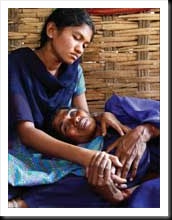
NAME OF THE DECEASED: VIJAY THAMKE, 45
RESIDENT OF: SONBARDI, YAVATMAL
CAUSE OF DEATH: DRANK ALCOHOL LACED WITH PESTICIDE
DATE OF DEATH: MARCH 27, 2010
|
EVEN IN death, Vijay Thamke had to wait. He lay on the post-mortem table for long because he was taken there on a Sunday. And then, just as they got ready to cut him up, seven more bodies landed — victims of a horrific accident the previous night. Thamke probably didn’t mind. He had waited long in life as well.
Until a year ago, Thamke did enough to keep going. He grew fruit on his three acres, mostly mangoes and oranges. He managed. Then, his crop began to fail over two years of drought and the money flow got thinner. Most farmers were struggling in Vidarbha, and Thamke tried a way out. He began to sell fruit grown by others. He would fill a basket and get to the crossroads. There, he would sit until dusk and return with the earnings, about Rs 100.
Slowly, the sale dropped. Not many people wanted to buy fruit in tough times. Thamke’s basket used to return almost as it left in the morning — full. Thamke lived in a tightly packed Dalit colony where everyone knew what the others were doing. Neighbours saw Thamke leave and return with a full basket. When a man begins to fall, the tone in people’s voices changes. There is pity in their eyes. They pay less attention to what you say. It’s not the same. Thamke sensed this.
A year ago, he hit the bottle. “He used to worry about the expenses. He often said he didn’t know how to get Pooja, our daughter, married (Pooja is 15). I’d tell him what will be, will be. But he didn’t heed,” Rama, his widow, wailed. Six years ago Thamke had borrowed Rs 30,000 as crop loan. He stopped paying the instalments after three years. After a few tense months, Thamke sent his son away to his grandfather (Rama’s father) because he couldn’t feed four mouths a day.
| On Saturday, after a day of binge drinking, Thamke came home. He curled up, and died. His was the 200th suicide this year |
Then, on a Saturday, after a day of binge drinking, Thamke came home. He curled up, and died. They found him at 7.30 pm. When he came home for the last time, from the post-mortem, he was wrapped up in plastic. The colony turned up to mourn. In Dalit tradition, Buddhist chants were played over a public address system. They prayed to two gods: the Buddha and Ambedkar. With them, Thamke wouldn’t cry.
And so they carried victim No 200 for this year on his last journey. It was blazing hot. They walked a mile. In a small clearing among the barren fields, Thamke’s son Ravikant lit the pyre. He was gone in a hurry. The post-mortem will probably find pesticide in his last drink. Rama, the widow, doesn’t drink. With her rests the future of Pooja. Two women, one life, one room. The story of Vidarbha.
The Way to a Dusty Death
The office of the Vidarbha Jan Andolan Samiti in Yavatmal is a busy place. The Samiti is an NGO that documents the suicides of farmers in the area. Often, people trust it more than the government. This is a conversation on a hot afternoon.
| 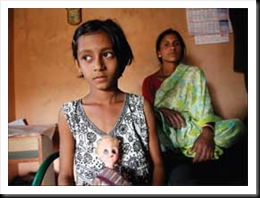
NAME OF THE DECEASED: ARUN SATPUTE, 38
RESIDENT OF: BHADALI, CHANDRAPUR
CAUSE OF DEATH: CONSUMED PESTICIDE
DATE OF DEATH: MARCH 23, 2010
|
Caller: “Sir, I am calling to report a farmer’s suicide. We are very upset.”
Santosh (a Samiti activist): “Where did it happen? Let me take the details.” (He scribbles the basic details in a register the Samiti has been filling for the past 10 years).
Caller: “Sir, Arun Satpute worked in the morning in his fields. He came home around 11 am, had his lunch, had a bath and left again. There is barely work in the fields now sir. There is no crop. He didn’t return till the evening. Satpute’s father took the cow for grazing in the farm at 5.30 pm. He heard gurgling sounds and he looked to find his son lying in the farm sir. There were two packets of insecticide nearby.”
Santosh: “What happened then?”
Caller: “The father ran home to inform the family. He then rushed to his nephew and they went back to the farm on a motorcycle. They called the sarpanch from there. The sarpanch came in a van. But, by that time, the sounds from Arun had stopped. He was foaming at the mouth. He went still.”
Santosh: “Did he have a loan?”
Caller: “He took Rs 60,000 last year from the Sahkar Seva Society for a borewell because he thought it would improve irrigation. He also took Rs 20,000 from relatives.”
Santosh: “Did the borewell work?”
Caller: “No sir. There is no water from the borewell now. There was a little water in the beginning and he celebrated. Then, there was nothing. It broke Arun’s spirit. He began to roam around aimlessly. He often wondered what he would do this year.”
Santosh: “How was his mood in the days before he died?”
Caller: “A couple of days before his death, he gave his daughter Pallavi, who is 10, Rs 100. Pallavi is fond of school sir, and Arun loved his daughter. Then, a day before his death, he and his family went to the wedding of his niece. He gave his niece Rs 600 as gift. Pallavi hasn’t stopped crying after her father’s death.”
| Arun, who had taken loans worth Rs 80,000, didn’t know what he would do this year. He slowly cut his wife off |
Santosh: “Did anyone know he would do something like this?”
Caller: “He never told his wife much. He has a brother, but he never told him anything either. Arun and his brother had eight acres each.”
Santosh: “We’ll see what we can do. Who are you?”
Caller: “I am Arun’s brother, Namdeo.”
The Sarpanch Who Was Ready
My Dear Trilok,
| 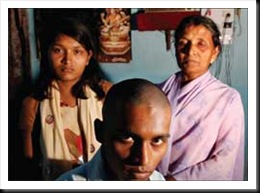
NAME OF THE DECEASED: ANIL NASRE, 52
RESIDENT OF: KHARASKHANDA, WARDHA
CAUSE OF DEATH: CONSUMED PESTICIDE
DATE OF DEATH: MARCH 26, 2010
|
There must be many questions in your mind by now, as you hear of what happened. Perhaps I should have told you, but I am writing this so you may understand. I lost my elder brother about 12 years ago, when you were only nine. I couldn’t abandon his family. So I called them to live with us. You know how they have been a part of our family.
We have six acres. It was divided among us brothers, but it came to me after he died. The farm is our main possession, but it was not enough to take you all on the path I wanted to. Five years ago, after discussing with your mother, I took a loan of Rs 50,000 from the Khadi Gramodyog. We set up a flour mill with that money. You have seen how your mother runs it every day.
When this worked, I decided to take another loan in 2006 for your education. You remember we put you in a private engineering college for your BE in IT. That day, we felt such pride that our son would be a software engineer. But, we needed to pay for your fees, room rent, etc. I took Rs 1.69 lakh as educational loan. I paid Rs 36,000 interest a year on the education loan, and I paid Rs 1,100 a month on the flour mill loan.
You will remember how many people used to come to our house every day when I was sarpanch. In my 10 years as sarpanch, I tried to do as much as possible for the people of the village. Which is probably why they kept me in the post for a decade. They say I was a popular sarpanch. I simply tried to do my duty.
Anyway, we decided to give your sister Kanchan a good education too. So we put her in the Polytechnic, in a Civil Engineering course. All this meant that our expenses had gone up. I had to do something to get more out of our farm. I took a third loan, of Rs 50,000 in 2007 as crop loan. To my horror, the monsoon failed for the next two years and the crop was poor.
| Two loans got the wife a flour mill and the son an IT degree. The third loan, for crop, didn’t deliver for the sarpanch |
A month ago, I was sent an electricity bill of Rs 10,000 for our farm. I have paid Rs 2,000. You know your cousin is to be married on June 6. She has known me as a father all her life. It is unbearable for me to think that I cannot give her a grand wedding. I have thought about this. You are about to complete your course. Soon, you will earn. I think it is time for me to go. The government will probably give your mother compensation. It should help.
I am so proud that you got a Dell laptop with your scholarship. Do take care of your sister and mother. I hope you understand.
Your loving father

